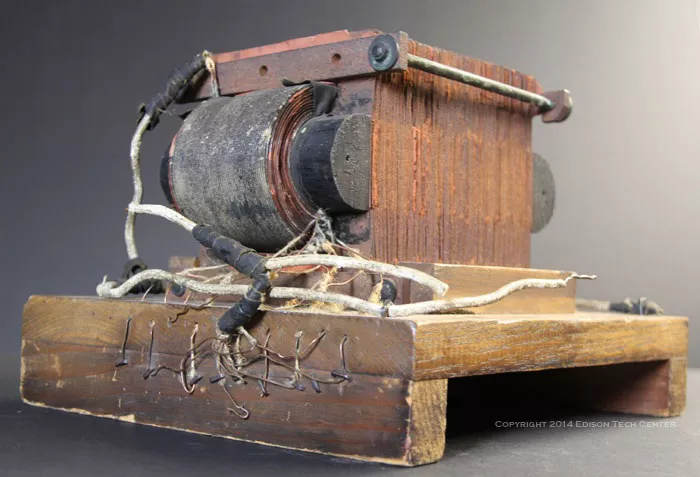Transformers have been a cornerstone of electrical engineering for well over a century, evolving from early experimental devices to the sophisticated power distribution systems we rely on today. But which transformer holds the title of the oldest? This article explores the history of transformers, identifies some of the earliest known units, and explains why determining the “oldest” transformer is more complex than it might seem.
The Origins of Transformer Technology
The transformer as we know it today emerged from the pioneering work of 19th-century scientists and engineers. While early experiments with electromagnetic induction date back to Faraday in the 1830s, the first practical transformers appeared in the 1880s as part of the burgeoning alternating current (AC) power systems.
Early Innovators and Their Contributions
Several key figures contributed to transformer development. William Stanley built one of the first commercially viable transformers in 1885 for Westinghouse, while Lucien Gaulard and John Dixon Gibbs demonstrated an early “secondary generator” (transformer) in 1883. These early units were crude by modern standards but established the fundamental principles still used today.
The First Transformer Installations
Some of the earliest transformer installations powered arc lighting systems in the 1880s. These units operated at low frequencies (often 133 Hz) and had open-core designs quite different from modern laminated-core transformers. A few original units from this era may still exist in museums or private collections.
Challenges in Identifying the Oldest Transformer
Determining the oldest operational transformer presents several difficulties. Many early units were experimental, poorly documented, or dismantled as technology advanced. Additionally, some “old” transformers in service today have undergone extensive repairs or component replacements that complicate their historical status.
Definitional Issues
What qualifies as a transformer? Early induction coils and experimental devices performed similar functions but lacked key features of modern transformers. Should these be included in the search for the oldest? Most historians focus on units designed specifically for AC power distribution.
Survivorship Bias
The transformers most likely to survive are those that saw little use or were preserved intentionally. Many early workhorse units operated until failure and were scrapped, leaving behind only documentation or photographs.
Notable Contenders for Oldest Transformer
Several transformers from the late 19th and early 20th centuries have claims to being among the oldest surviving examples.
The Great Barrington Transformer
Installed in 1886 as part of William Stanley’s AC demonstration system in Massachusetts, this transformer helped prove the viability of AC power distribution. While the original may not survive, replicas and similar units from the period exist in museums.
Early European Installations
Several European power stations from the 1890s contained transformers that remained in service for decades. The power plant at Lauffen, Germany (1891) and Deptford Power Station in London (1889) housed early transformer banks, though it’s unclear if any original units survive intact.
Museum-Preserved Specimens
The Deutsches Museum in Munich and the Smithsonian Institution hold transformer examples from the 1890s. These were typically preserved early in their service life rather than operating continuously, raising questions about their “oldest” status.
The Oldest Continuously Operating Transformers
Some transformers have remained in service with minimal modifications for remarkably long periods.
Early 20th Century Utility Transformers
Several electric utilities still operate transformers installed in the 1910s-1920s, particularly in rural areas with stable load profiles. These oil-filled units often outlasted their expected service life through careful maintenance.
Industrial Plant Transformers
Heavy industries like steel mills sometimes retain original transformers from their early electrification. The Lackawanna Steel Works in New York reportedly had transformers from 1902 that operated into the 1960s.
Technical Evolution of Long-Lived Transformers
The transformers that survived longest share certain design and operational characteristics.
Robust Construction
Early transformers used thick paper insulation and generous copper windings that proved surprisingly durable. Their simple designs lacked modern vulnerabilities like thermoset plastics that degrade over time.
Conservative Loading
Most long-lived transformers operated well below their rated capacity for most of their service life. This reduced thermal cycling and insulation stress that causes aging in heavily loaded units.
Maintenance Practices
Regular oil filtration, moisture control, and winding inspections extended transformer life significantly. Some utilities developed specialized maintenance programs for their oldest units.
Why Transformer Longevity Matters
Studying old transformers provides valuable insights for modern power systems.
Lessons in Durability
Early transformer designs reveal construction techniques that promoted exceptional service life. Some utilities now apply these lessons to extend the lifespan of modern units.
Material Science Insights
Analyzing century-old insulation and winding materials helps researchers understand long-term degradation processes in electrical equipment.
Historical Preservation
Old transformers represent important milestones in electrical engineering history. Preserving them maintains tangible connections to the pioneers of electrification.
The Future of Transformer Aging
Modern transformers may not match the longevity of early units due to different design priorities.
Changed Economic Factors
Early transformers represented massive capital investments worth preserving. Today’s more disposable economy favors replacement over decades-long maintenance.
New Materials Challenges
While modern materials offer better initial performance, their long-term aging characteristics remain less proven than traditional paper/oil systems.
Smart Monitoring Potential
New sensor technologies may help extend modern transformer life by enabling predictive maintenance before failures occur.
Conclusion
The search for the oldest transformer reveals not just a single device, but the remarkable evolution of electrical technology. While no single unit can claim definitive title as the oldest, the transformers that survive from the late 19th and early 20th centuries testify to the durability and adaptability of this fundamental electrical component. These aging workhorses continue to teach us valuable lessons about engineering, maintenance, and the long-term stewardship of critical infrastructure. As we develop new transformer technologies, the examples set by these pioneering units remind us that good design and careful operation can produce equipment that serves generations.
Related Topics:

